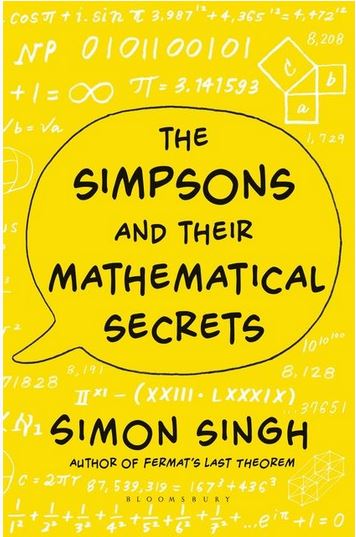In 1998 during a mid-life crisis, when he realized that he would probably reach the end of his life without having achieved anything, Homer Simpson just about discovered the Higgs Boson, fourteen years before the world’s geniuses managed to do so at CERN with the Large Hadron Collider in Switzerland in 2012.
The Higgs boson (Higgs particle) is an elementary particle in the Standard Model of particle physics.
In 1998, in an episode called “The Wizard of Evergreen Terrace,” Homer becomes anxious when he discovers that at the age of 39 he is more than halfway through the expected lifespan of the average American male. So he falls into a mid-life crisis.

Homer comes incredibly close to discovering the Higgs boson.
He becomes depressed because his life appears to have no meaning, given that he has not accomplished anything.
He reads up on Thomas Edison, the prolific inventor, and decides to become one himself. He quits his job at the nuclear power station and starts inventing several devices. His first is a reclining chair with a built-in toilet, then he invents a cosmetic shotgun that blasts makeup onto women’s faces, as well as an alarm that makes a sound every three seconds while everything is OK.
Homer’s miraculous achievement
During the show he is standing in front of a blackboard writing equations – in one he predicts the mass of the Higgs boson. For Homer, the antithesis of a boffin, this is a miraculous achievement!
The author of “The Simpsons and their Mathematical Secrets,” Simon Singh, explains:
“That equation predicts the mass of the Higgs boson. If you work it out, you get the mass of a Higgs boson that’s only a bit larger than the nano-mass of a Higgs boson actually is. It’s kind of amazing as Homer makes this prediction 14 years before it was discovered.”
Simon Singh’s book (Image: Bloomsbury Publishing Plc)
Who would have thought that the incompetent dad who sleeps on the job, snacks on donuts and drinks “Duff Beer” while slouched on his couch watching TV at home, would be the first man in the world to make such a scientific breakthrough?
One wonders how long it will be before he is awarded the Nobel Prize.
The mathematics in The Simpsons and Futurama
The people who created both The Simpsons and Futurama, Matt Groening and several screenwriters, embedded complicated mathematics references throughout the two series, ranging from the latest theorems and conjectures to famous equations, Mr. Singh said.
The majority of the shows’ writers, as well as having an amazing sense of humour, are graduates in mathematics.
According to Mr. Singh, The Simpsons may “encourage and nourish” lovers of mathematics. He said he hoped teenagers would be inspired by the shows’ creators’ interests.
The following description of Mr. Singh’s book comes from simonsingh.net:
“While recounting memorable episodes such as ‘Bart the Genius’ and ‘Homer’, Singh weaves in mathematical stories that explore everything from pi to Mersenne primes, from Euler’s equation to the unsolved riddle of P v. NP, from perfect numbers to narcissistic numbers, from infinity to even bigger infinities… and much more.”
While writing his book, Mr. Singh interviewed a number of writers from the team, including Jeff Westbrook, Al Jean, and David X. Cohen. As they explain how the shows are created, their “love of arcane mathematics become clear,” he comments.
Video – Complicated mathematics in The Simpsons
Mr. Singh talks to Al Jean and David Cohen about the mathematics embedded in the Futurama and Simpsons shows.


